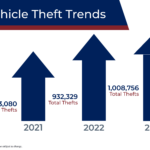AIR Worldwide Corp. has issued a white paper that offers U.S. insurers guidelines for answering questions in the terrorism
The SRQ requires companies to demonstrate how they analyze and manage exposure to terrorism risk. The white paper explains in detail how AIR’s Terrorism Loss Estimation Model can be used to answer the questions in the SRQ. The white paper has been reviewed by A.M. Best and found to be an acceptable approach to meeting A.M. Best’s needs.
“This year the terrorism section of the SRQ has been expanded from three to eight questions designed to gather information on such topics as terrorism exposure management practices, maximum foreseeable accumulations for single and multiple addresses, and deterministic loss scenarios,” said Jack Seaquist, a senior manager at AIR. “We have written this white paper as a resource for insurers who need to provide information on their terrorism risk management practices to A.M. Best for rating purposes.”
In addition to helping insurers answer questions in the SRQ, AIR’s Terrorism Loss Estimation Model can assist insurers in significantly enhancing their overall terrorism risk management practices. Using AIR’s catastrophe modeling systems, CATStation and CLASIC/2, insurers can implement techniques such as exposure accumulation analyses, target landmark risk analyses, probabilistic portfolio loss analyses, and other methods to manage terrorism risk.
AIR’s terrorism model was first released in September 2002 and is now reportedly used extensively by insurers, corporations and government agencies. It is updated on a regular basis to account for the evolving threat.
To download the white paper, go to www.air-worldwide.com.
Was this article valuable?
Here are more articles you may enjoy.

 Hawaiian Electric Hits 40-Year Low Ahead of Maui Fire Report
Hawaiian Electric Hits 40-Year Low Ahead of Maui Fire Report  Viewpoint: How Generative AI Enables a Brighter Claims Future in 2024 and Beyond
Viewpoint: How Generative AI Enables a Brighter Claims Future in 2024 and Beyond  Justice Department Preparing Ticketmaster Antitrust Lawsuit
Justice Department Preparing Ticketmaster Antitrust Lawsuit  National Crime Report Shows Vehicle Thefts Surged to More than 1 Million in 2023
National Crime Report Shows Vehicle Thefts Surged to More than 1 Million in 2023 